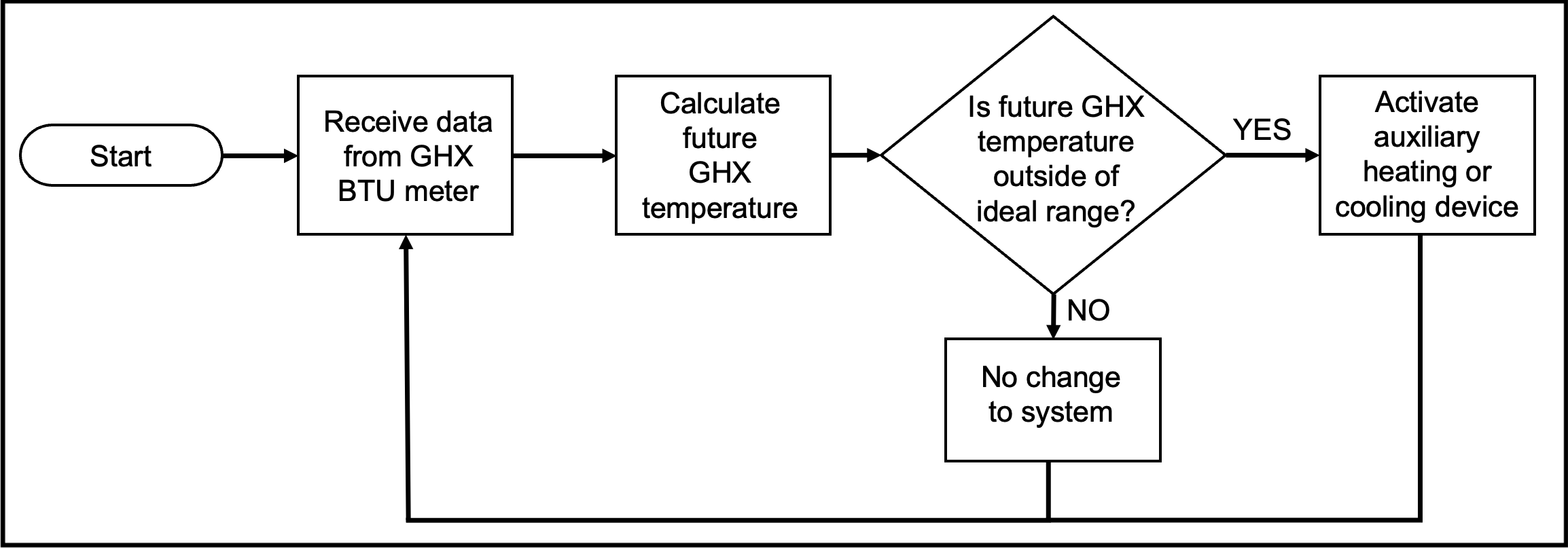
Proactive vs. Reactive
by GeoFease | Oct. 1, 2024, 7:45 p.m.
In today’s energy systems, many Ground Heat Exchanger (GHX) installations rely on reactive control methods. Typically, auxiliary systems are triggered by temperature thresholds—when the heat pump’s entering water temperature from the GHX falls below or rises above set points, auxiliary heating or cooling is activated. While this method is common, it is inefficient. GHX systems are slow to respond, much like a tanker ship, and by the time corrective action is taken, it’s often too late to optimize energy use.
Reactive Control: Inefficiency and Higher Costs
Reactive control increases dependence on auxiliary systems, like gas boilers or electric heaters, which are activated during peak demand periods when energy is most expensive. This leads to higher operating costs and unnecessary energy consumption. Systems are forced to operate at inefficient times, pushing up your energy bills. With the growing shift away from fossil fuels, such as natural gas bans in new buildings in regions like New York, this approach becomes increasingly unsustainable.
Electrically powered auxiliary systems are even more costly when used reactively, as they often run during periods of high electricity rates. This results in increased demand charges and kWh consumption—costs that could be avoided with smarter, proactive management.
Proactive Control: Anticipating System Needs for Maximum Efficiency
Proactive control involves predicting system needs and adjusting auxiliary equipment before problems occur. By anticipating future GHX temperatures, you can optimize system performance, reduce energy costs, and lower fossil fuel consumption. Instead of reacting to peak demand, proactive control allows systems to operate during non-peak times, when energy rates are lower and equipment can run more efficiently.
For example, if trends suggest your GHX might overheat in the future, adjustments can be made in advance. This reduces strain on equipment and avoids high-cost energy use during peak periods. Additionally, proactive management allows you to take advantage of favorable outdoor conditions to pre-charge or trickle-charge the GHX, further optimizing system efficiency.
Fluid coolers, which consume less electricity due to their lack of compressors, are particularly well-suited to this approach. Managing these systems proactively ensures you capitalize on optimal conditions, reducing both energy use and costs.

Proactive control outperforms reactive control in terms of energy efficiency, cost savings, and system longevity. By anticipating and adjusting for future needs, you can avoid the inefficiencies of reactive control, reduce your reliance on auxiliary systems, and maximize the performance of your GHX system. As energy prices fluctuate and fossil fuel restrictions increase, the case for proactive management grows stronger, offering a smarter, more sustainable solution for today’s energy challenges.